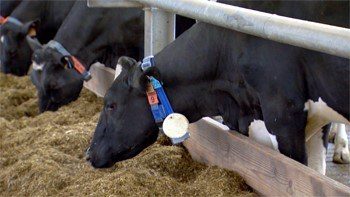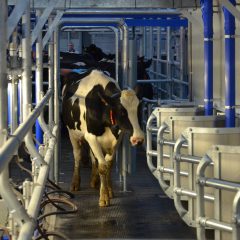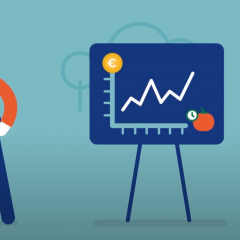Research project Internet-of-animals: design and development of an integrated health and welfare monitoring system for dairy cows

General introduction
To manage the intensification of livestock production in an economically efficient way, the modern dairy farms have to rely on precision livestock farming (PLF) systems for the collection and the interpretation of animal behavioural data. PLF technologies and research have focused predominantly on single applications for which a small number of specific parameters are monitored by a specific sensor (e.g., pH value monitoring for illness, milk analysis for mastitis, activity detection for oestrus). This approach requires the farmer to buy and integrate multiple PLF-solutions from different providers in the farm depending on the purpose. This is impractical as it increases the deployment, training, and maintenance costs. The main goal of this project is to investigate the integration of different sensors (localization, accelerometers) the detection and monitoring for multiple animal states and anomalies (calving, oestrus, lameness, and heat stress).
Research approach
The first work package investigates the design of health and welfare tracking algorithms based on the combination of localization and accelerometer sensors, which is largely ignored in state-of-the-art precision livestock farming studies. First, data (accelerometers, localization...) will be collected on large numbers of animals and different farms under a variety of environmental conditions, including housing, feeding and season. The collected data will be processing and multiple cow variables will be extracted (e.g., feeding time, lying time, travelled distance…). Next, detection algorithms and alert system will be developed based on the obtained cow variables. Finally, the developed algorithms will be validated on new animals and farms.
The second work package investigates the feasibility of real-time in-body data collection (e.g., rumen pH, temperature). This will be achieved by first designing and manufacturing of optimised antennas for in-to-out-body communications for cows. Then, characterizing the in-to-out-body path loss (signal attenuation) at multiple licence free frequency bands e.g., 433, 868, and 1400 MHz. Finally, the optimized antenna will be integrated with the sensors (i.e., pH, temperature) in a bolus.
Relevance/Valorization
Animal production is largely dependent on the health status of the animals while health, behaviour and welfare are a reflection of the management at farm level. The development of innovative monitoring systems to reliably and energy-efficiently gather data, and the use and implementation of innovative tools to analyse the huge amount of data that will become available on a farm, all will contribute to an accurate analysis and subsequently optimization of the animals’ (re)production, health and welfare status.
Accurate interpretation of this large amount of data will also provide profound knowledge of the behaviour and performance as well as disease status of the animals. Smart use of data and of modern data handling techniques like the use of machine learning, will allow dynamic adaptations in the management system leading to a further increase of the animals’ productivity as well as health and welfare status.
Financing
FWO - Fonds Wetenschappelijk Onderzoek








